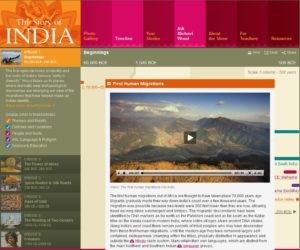Teaching Resources: Existing India EAA Archives
Obviously, we have been thinking about India and South Asia recently, but as we began work (October 16th) on this Digest issue, it certainly was attention-getting that half of trending articles were about India. Please note the genuine variety represented in the following trending articles.
On the Difference Between Hinduism and Hindutva by Arvind Sharma (Spring 2020, Vol. 25, No. 1)
Exploring Indian Culture through Food by Tulasi Srinivas (Winter 2011, Vol. 16, No. 3)
In addition, these three archived resources should be helpful to students and instructors who teach world history, economics, comparative politics, and business courses.
EAA editorial board member Nimish Adhia’s The History of Economic Development in India since Independence (Winter 2015, Vol. 20, No. 3) essay is a superb, basic introduction to India’s post-1949 economic evolution.
Professor Adhia’s interview with former special adviser to the British Prime Minister, and successful entrepreneur in India, Alan Rosling, Boom Country? An Interview with Alan Rosling (Fall 2019, Vol. 24, No. 2) elicits the realized and potential dynamism of Indian entrepreneurial creativity.
The interview is followed by Director of the Entrepreneurship Center at Hawai`i Pacific University Ken Schoolland’s companion pedagogical essay review Inspiration in India for a New Generation of Entrepreneurs (Fall 2019, Vol. 24, No. 2) that provides some unique, and perhaps surprising points about teaching Alan Rosling’s book.
Other Teaching Resources: The Story of India
Although produced in 2009, the PBS multimedia production The Story of India is still the most comprehensive treatment of India available for teachers and students. Teachers will find six lesson plans on various India-related topics appropriate for middle school and high school world history classes. Lesson plan topics include “Tracking Early Hinduism,” “An Edict on Ashoka,” “The Winds of Trade,” “Monument to the Stars,” “Akbar’s Debate,” and “British Attitudes Towards India.” Each lesson plan includes video clips from the series and teachers can also utilize the interactive timeline. Additional digital resources for teaching about India are also available on the website.

This article was published as part of the October 2020 EAA Digest.

